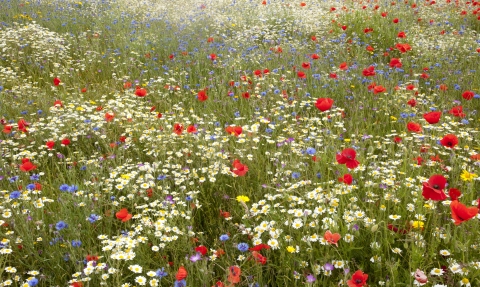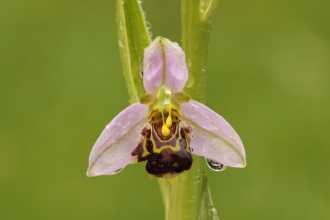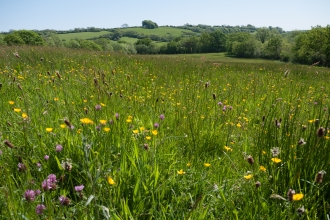
Summer Meadows
What are they?
Whether it is a blaze of yellow from meadow buttercups, the spikes of green-winged and early orchid, or the nodding, papery petals of snake’s head fritillary – Britain’s wild meadows hum with life from the first spring bloom to the purple hues of autumn’s meadow saffron. With just 15,000 hectares of species-rich neutral grassland remaining in the UK, these vibrant and life-filled fragments are true wildlife gems.
Where can I see them?
Freeman's Pasture
This idyllic meadow setting is a real-life hidden gem. This small, wildflower-rich pasture is one of the very few, species-rich grasslands remaining in the region. More than 120 plant species have been recorded in the recent past.
Mere Sands Wood
Wildflowers on site include marsh helleborine, common spotted, early and southern marsh and bee orchids. Notable species include golden dock, yellow bartsia, yellow-wort, lesser centaury and royal fern.
Salthill Quarry
Bee orchid, carline thistle and milkwort can be seen growing on the thin soils in June. You may also see the delicate blue flowers of harebell growing on the shallower soils and edges of exposed rocks. The meadow area is at its best in July when dominated by the purple flowers of betony, augmented by meadow sweet and the yellow rough hawkbit.
Cross Hill Quarry
In June, the main quarry floor is rich in lime and provides perfect growing conditions for many limestone grassland flowers.
Heysham Nature Reserve
The diversity of habitats has produced a wide variety of flowering plants with over 215 species recorded, including bee orchid and yellow-wort.
Lightshaw Meadows
The improvement of the natural hydroloogy of the site has allowed a meadow grassland with a good range of flowering plants to develop.
Summerseat Nature Reserve
Conditions are being improved by the planting of a shrub layer, including species such as holly and hazel. Flower species that can be seen in this area include knapweed, musk mallow, ox-eye daisy, tansy and yellow-rattle.
Wigan Flashes
The remaining colliery spoil and ash provide suitable conditions for a wide variety of wild flowers such as common spotted-orchid, marsh-orchids, evening-primrose, pale toadflax and viper's-bugloss.



